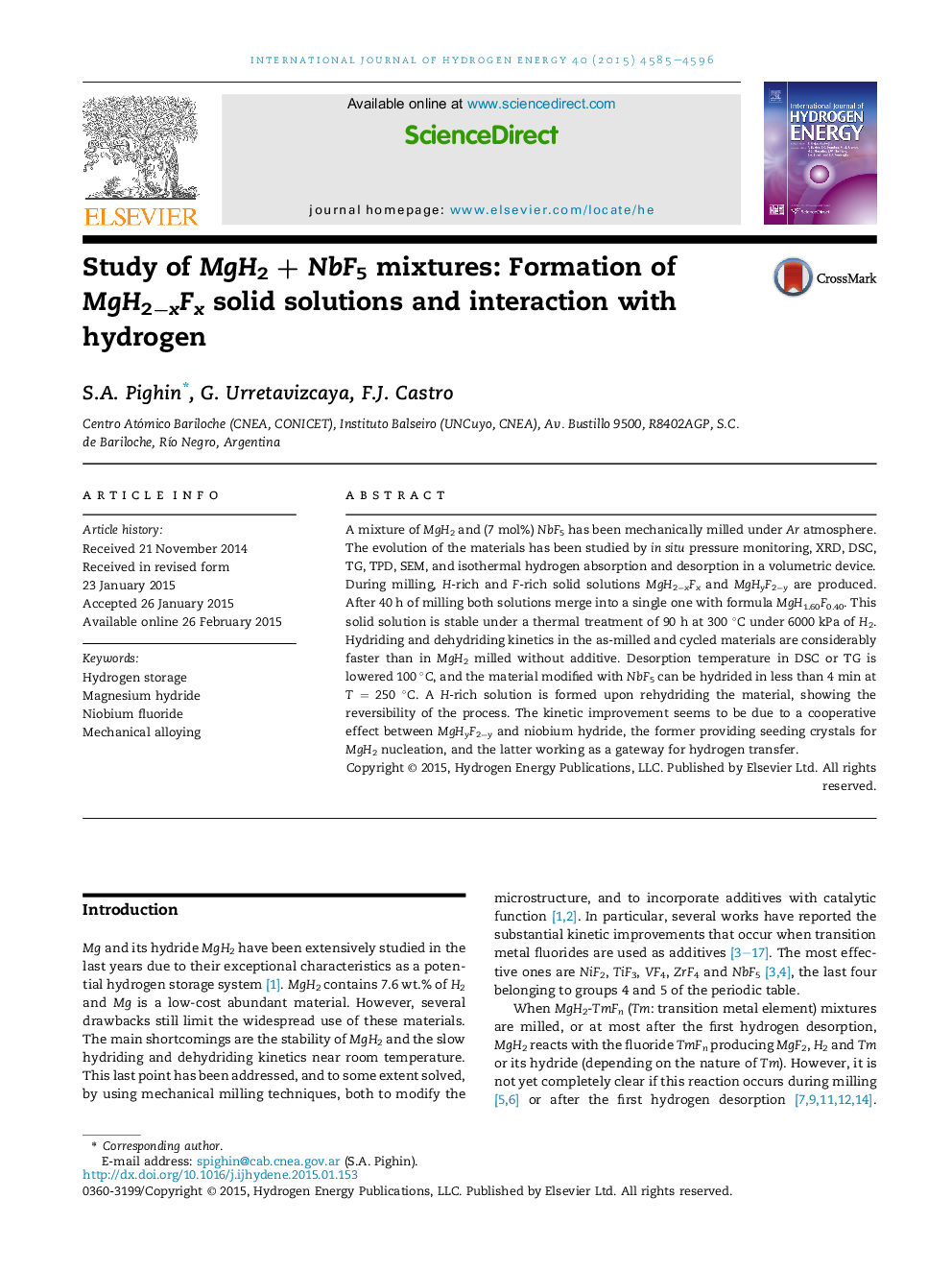| Article ID | Journal | Published Year | Pages | File Type |
|---|---|---|---|---|
| 7715905 | International Journal of Hydrogen Energy | 2015 | 12 Pages |
Abstract
A mixture of MgH2 and (7 mol%) NbF5 has been mechanically milled under Ar atmosphere. The evolution of the materials has been studied by in situ pressure monitoring, XRD, DSC, TG, TPD, SEM, and isothermal hydrogen absorption and desorption in a volumetric device. During milling, H-rich and F-rich solid solutions MgH2âxFx and MgHyF2ây are produced. After 40 h of milling both solutions merge into a single one with formula MgH1.60F0.40. This solid solution is stable under a thermal treatment of 90 h at 300 °C under 6000 kPa of H2. Hydriding and dehydriding kinetics in the as-milled and cycled materials are considerably faster than in MgH2 milled without additive. Desorption temperature in DSC or TG is lowered 100 °C, and the material modified with NbF5 can be hydrided in less than 4 min at T = 250 °C. A H-rich solution is formed upon rehydriding the material, showing the reversibility of the process. The kinetic improvement seems to be due to a cooperative effect between MgHyF2ây and niobium hydride, the former providing seeding crystals for MgH2 nucleation, and the latter working as a gateway for hydrogen transfer.
Related Topics
Physical Sciences and Engineering
Chemistry
Electrochemistry
Authors
S.A. Pighin, G. Urretavizcaya, F.J. Castro,
